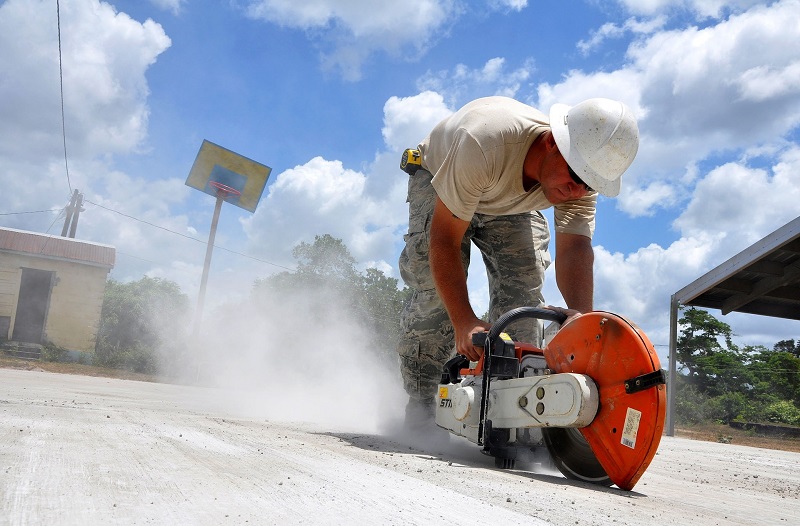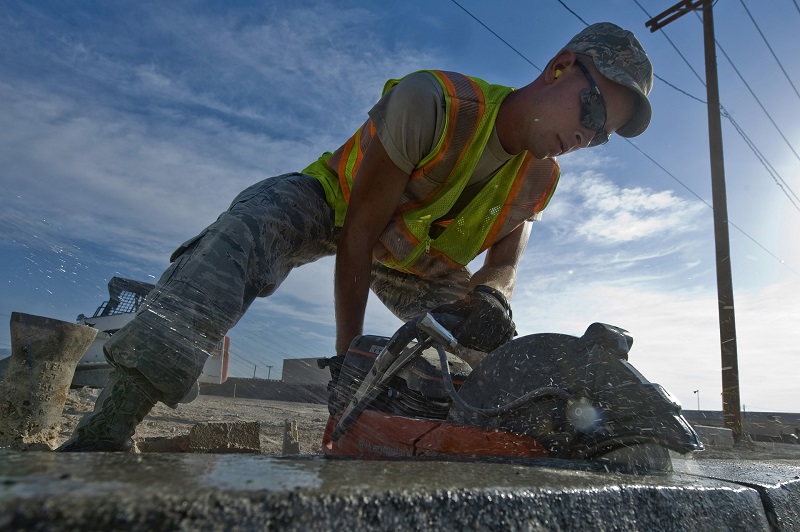
A concrete saw is a powerful tool that may be used to cut into different kinds of hard materials such as concrete, asphalt, tile, masonry, etc. There are several different variations of the concrete saw available which may have differences in how it is powered, how it is used and what extent of hard material it can cut through. The machine may be small and handheld or big walk-behind models are also available and they may be powered by either gasoline, hydraulic pressure or even sometimes an electric motor.
The blades of the concrete saw are usually composed of diamond and there are several factors which have to be heeded. The kind of blade to use solely depends on the kind of job that needs to be done. The blade will vary based on if the user wants a longer lifespan or fast speed cutting, the kind of power the saw will be using and it the cutting is being performed in dry or wet conditions. When cutting hard materials like concrete the blades need to be used with the presence of water otherwise, they may break and if for certain reasons water cannot be used the blades must be extremely sharp and strong to be able to withstand the immense pressure when being used. Other types of concrete and asphalt blades might also be available for softer cuts.

4 Tips For Perfect When Working With A Concrete Saw
It is important that the concrete saw is used in a proper manner otherwise it may cause harm to the operator. Concrete is not an easy material to cut and therefore there are several precautions and guidelines that should be followed when working with a concrete saw some of which are listed below:
- Time should be right: wet concrete is extremely difficult to cut into and once it is fully cured the concrete can become so hard that it may fracture or hurt anybody who tries to cut through it no matter how strong the blade is and therefore concrete is best to cut when it has cured halfway. It is not very hard and generates comparatively less dust.
- Variation of the saw: the best saw for the job should be chosen. For small scale jobs, the smaller hand held saws may be used. Such saws can be used in both wet and dry applications. The wet blade keeps the dust at the minimum but using the blade wet or dry is a personal preference is a case of small saws. For large scale jobs, one should invest in a walk-behind saw which can make deeper and cleaner cuts in lesser time and effort as compared to small saws. They make a large impact at once rather than making several smaller ones but such saws may only be used.
- Get rid of the dust: the dust that is generated in the process must be dealt with in an appropriate manner because of certain rules being in place for dealing with such particles which may become airborne and cause problems in breathing. When a dry blade is being used a dust extractor used also be installed so that the dust does not get mixed in with the air and when a wet blade is used the dust gets washed away causing no harm.
- Selection of blade: In most cases, the diamond blade is the most appropriate choice but for lighter purposes, other blades can also be considered
Several other precautions such as properly marking the places where the cuts need to made either by a crayon or chalk, using the correct kind of power source and not forcing the blade are also important and to be kept in mind. The use of the concrete saw requires expertise and finesse and it is recommended that such work be done by a professional.